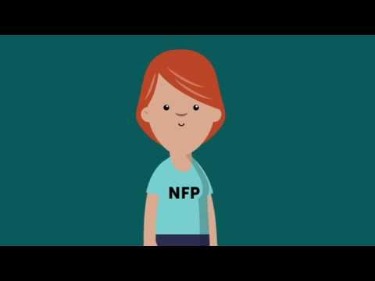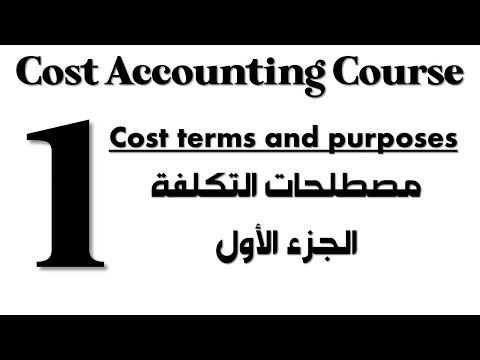Content
For the dresses which are custom-made or custom-fitted, the company should use the job order costing system. The stylist would work to take measurements and make adjustments, which would be considered labor. The cost of the dress, as well as added fees for the fitting, adjustments, or additional materials would be included in the bill to the customer. For the products which are sold at the retailer but are not customized, such as accessories, these would be included in the process costing system since the products are the same.

Lean accounting is a method that focuses on the value of each part of the production process and seeks to reduce costs to as little as possible. Closely tied to lean manufacturing, lean accounting places the highest value on what customers perceive as valuable and reduces costs to maximize that philosophy. Job order costing is commonly used for companies that produce products that aren’t identical. If a company builds custom cars, the cost for each car will likely be different because each customer will have a specific set of requirements. Since the product is unique, it’s easier to track the cost of each order or service on a per-project, or job order, basis. For example, the rent for the ice cream company’s building is considered a fixed cost since the amount of ice cream produced doesn’t affect the monthly rent.
Environmental Accounting
The cost can be reduced in the long run when cost reduction programs and improved methods are tried to reduce costs. The financial statements are generally prepared https://kelleysbookkeeping.com/ once a year or half-year to meet the needs of the management. The cost accounting system should be capable of adapting itself to the changing situations of business.

The break-even point—which is the production level where total revenue for a product equals total expense—is calculated as the total fixed costs of a company divided by its contribution margin. The contribution margin, calculated as the sales revenue minus variable costs, can also be calculated on a per-unit basis in order to determine the extent to which a specific product contributes to the overall profit of the company. Standard costing assigns “standard” costs, rather than actual costs, to its cost of goods sold (COGS) and inventory. The standard costs are based on the efficient use of labor and materials to produce the good or service under standard operating conditions, and they are essentially the budgeted amount. Even though standard costs are assigned to the goods, the company still has to pay actual costs.
Activity-based Cost Accounting
Cost Accounting Standards, or CAS, are essential to modern accounting and financial management. They set specific criteria for determining costs that they must maintain to comply with GAAP principles. It is because these allocations can vary significantly based on what type of operations are involved in producing the goods or services being sold. As such, an organization must consider all potential costs when allocating them for proper compliance with CAS rules. Organizations can ensure they take full advantage of the benefits of cost accounting standards by implementing various measures.
- Throughput accounting is a relatively new and simplified form of accounting.
- Cost accounting is a process that helps organizations determine the cost of production or provision of goods and services.
- If the variance analysis determines that actual costs are higher than expected, the variance is unfavorable.
- When a business has a better idea of exactly how its money is being spent, it can better budget for the future.
Necessity of cost accounting is felt more if overheads form a significant portion of total cost as we will see in t he course of our discussion in the book. Thus, costing means such an analysis of information as to enable management to know the cost of producing and selling, that is the total cost of various products and services and also to know how the total cost is constituted. It includes the presentation of information derived there from for the purpose of management decision-making’. Cost Accountancy is, thus the science, art and the practice of cost accountant. The cost of goods sold is determined based on the cost of merchandise, which is essential for calculating the profit margin. By analyzing inventory costs, the management can assess the value of inventory and the amount of stock to maintain optimal performance.
What Is Cost Accounting? Definition, Concept, and Types
Read this article to learn about the definitions, objectives, functions and objections of cost accounting. Besides this, cost and management accounts are utilized in the same context. As it is possible to know the cost of the product at every stage, it becomes possible to check the forms of waste, such as time and expenses, etc, in the use of machine equipment and material. Cost accounting helps to produce statements at short intervals as the management may require.
A good management should be able to benefit greatly from the installation of Cost Accounting, but the character of management is of vital importance here. Really speaking, the cost accountant can only prepare information highlighting the points which should be studied, but action is something which is beyond the cost accountant and is a function of management itself. (vi) It enables unprofitable activities of the business disclosed, so that steps may be taken to eliminate or reduce them.
What Are Some Advantages of Cost Accounting?
Because these systems can impact the overall success and growth of a company, it is important to implement the correct type of system. Making use of these systems efficiently can help the business to run its operations smoothly. (d) Fix reasonable prices of certain items of production so as to prevent undue profiteering. It is argued that the adoption of costing system failed to produce the desired results in many cases and, therefore, the system is defective. The failure of a system may be due to several causes such as apathy or indifference of management, lack of adequate facilities, non-co-operation or opposition from the employees. So it is hasty to find fault with the system, if it fails to produce the desired results.
Marginal costing is a costing technique that analyzes the impact of adding one more unit to production on the cost of a product. It is particularly useful for making short-term economic decisions, as it helps management understand how changes in costs and volume affect operating profit. This type of analysis can help management identify potentially profitable new products, determine sales prices for existing products, and evaluate Cost Accounting Definition the effectiveness of marketing campaigns. As business became more complex and began producing a greater variety of products, the use of cost accounting to make decisions to maximize profitability came into question. Management circles became increasingly aware of the Theory of Constraints in the 1980s and began to understand that “every production process has a limiting factor” somewhere in the chain of production.
By comparing actual and budgeted costs, the management can identify variances and take corrective actions. Cost accounting also helps assess the performance of different departments, products, and services. So, cost accounting is an important component of management accounting because it assists managers in making educated decisions about pricing, production, and resource allocation. Cost accounting assists companies in improving their profitability, efficiency, and market competitiveness by providing precise and trustworthy cost information.
In 1982, 10 new accounting standards were added, which addressed topics such as ‘Scope of Cost Principles,’ ‘Unallowable Costs,’ and ‘Computation of Final Indirect Cost Rates, ’ among others. Subsequent modifications to existing standards are made over the years to accommodate changes in requirement definitions or technological advances. The first set of CAS regulations was promulgated on December 16, 1970, effective October 1, 1971.
What is the purpose of cost accounting?
Both are used for tracking production costs; however, each of these systems works in a different way. It establishes budgets and standard costs and actual cost of operations, processes, departments or products and the analysis of variances, profitability and social use of funds. Costing involves the classifying, recording, and appropriate allocation of expenditure for the determination of costs of products or services, the relation of these costs to sales value; and the ascertainment of profitability.